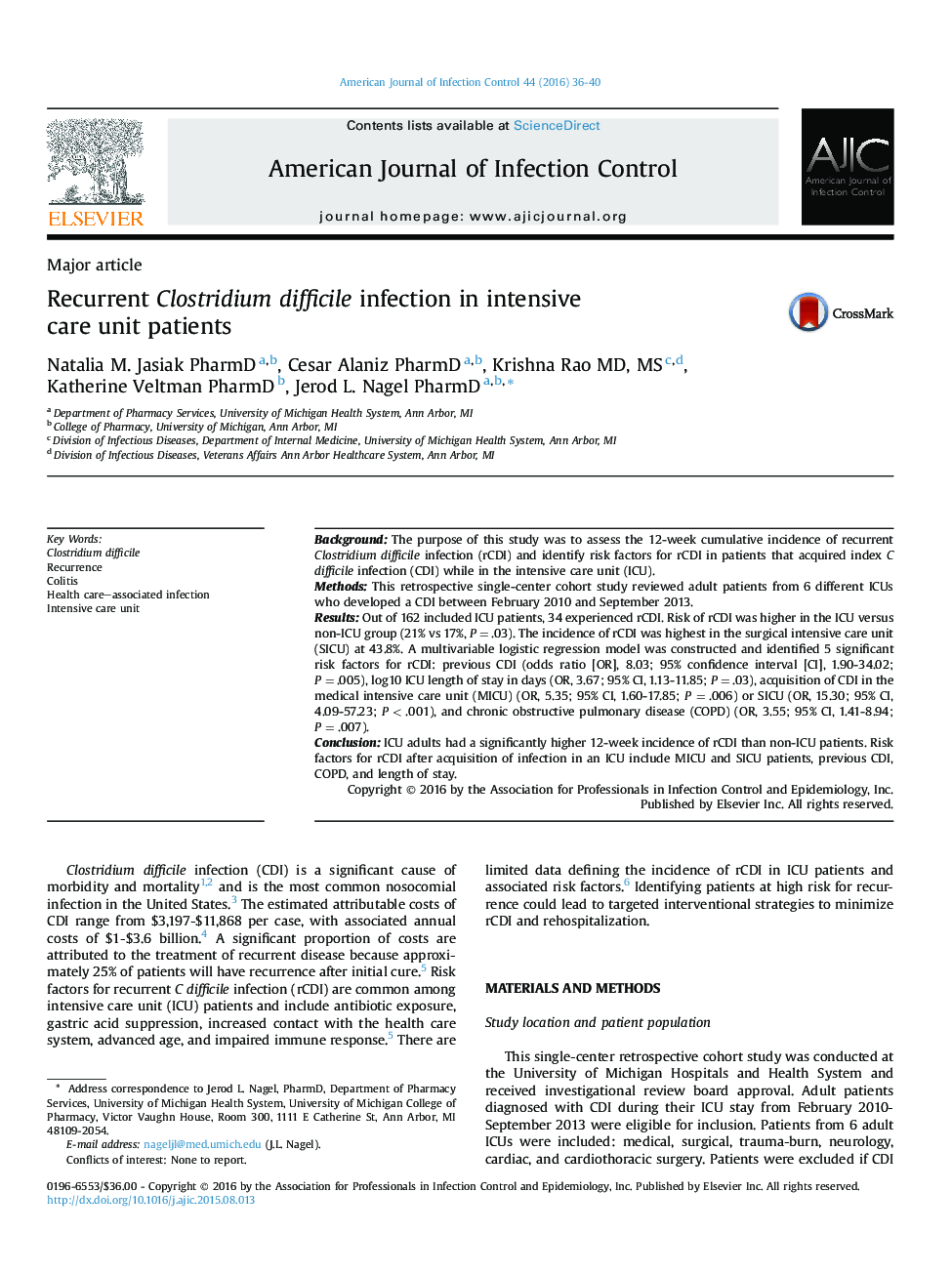| Article ID | Journal | Published Year | Pages | File Type |
|---|---|---|---|---|
| 2638242 | American Journal of Infection Control | 2016 | 5 Pages |
BackgroundThe purpose of this study was to assess the 12-week cumulative incidence of recurrent Clostridium difficile infection (rCDI) and identify risk factors for rCDI in patients that acquired index C difficile infection (CDI) while in the intensive care unit (ICU).MethodsThis retrospective single-center cohort study reviewed adult patients from 6 different ICUs who developed a CDI between February 2010 and September 2013.ResultsOut of 162 included ICU patients, 34 experienced rCDI. Risk of rCDI was higher in the ICU versus non-ICU group (21% vs 17%, P = .03). The incidence of rCDI was highest in the surgical intensive care unit (SICU) at 43.8%. A multivariable logistic regression model was constructed and identified 5 significant risk factors for rCDI: previous CDI (odds ratio [OR], 8.03; 95% confidence interval [CI], 1.90-34.02; P = .005), log10 ICU length of stay in days (OR, 3.67; 95% CI, 1.13-11.85; P = .03), acquisition of CDI in the medical intensive care unit (MICU) (OR, 5.35; 95% CI, 1.60-17.85; P = .006) or SICU (OR, 15.30; 95% CI, 4.09-57.23; P < .001), and chronic obstructive pulmonary disease (COPD) (OR, 3.55; 95% CI, 1.41-8.94; P = .007).ConclusionICU adults had a significantly higher 12-week incidence of rCDI than non-ICU patients. Risk factors for rCDI after acquisition of infection in an ICU include MICU and SICU patients, previous CDI, COPD, and length of stay.
